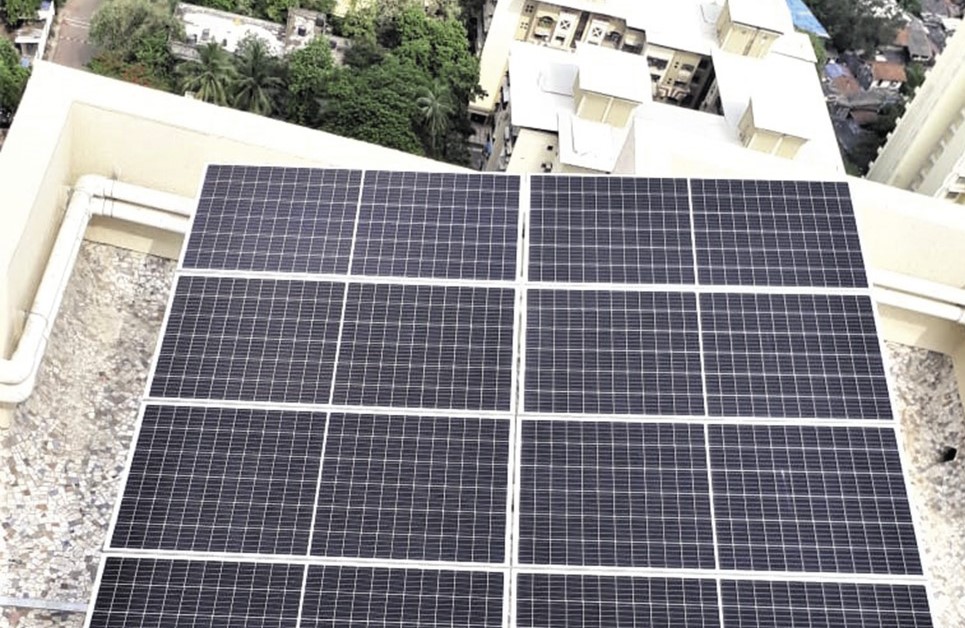From pv magazine India
India will fall well short of its installed solar capacity target of 100 GW by 2022, mainly due to the slow uptake of rooftop solar, according to a new report by JMK Research and the Institute for Energy Economics and Financial Analysis (IEEFA).
The report highlights rooftop solar as the pain point in India’s journey to 100 GW. It projects that by December 2022, there will be a 25 GW shortfall in meeting the 40 GW rooftop solar target, compared to just 1.8 GW in the utility-scale solar target.
As of December 2021, India had installed a cumulative solar capacity of 55 GW, with grid-connected utility-scale projects contributing 77% (42.3 GW) and the balance coming from grid-connected rooftop solar (20%) and mini or micro off-grid projects (3%).
The nation is expected to add another 19 GW of solar capacity in 2022 – 15.8 GW from utility-scale and 3.5 GW from rooftop solar. This will take the cumulative utility-scale PV capacity to 58.2 GW and cumulative rooftop solar capacity to 15 GW by the end of December.
“Even with this capacity addition, about 27% of India’s 100 GW solar target would be unmet,” said Jyoti Gulia, the report's co-author and JMK Research founder.
On the current trajectory, the report finds India’s solar target of 300 GW by 2030 will be off the mark by about 86 GW.
“Utility-scale solar capacity addition is on track. India is set to achieve nearly 97% of its 60 GW target,” said Gulia. “This makes it imperative to have a more concerted effort towards expanding rooftop solar.”
Challenges
The report states that headwinds ranging from pandemic-induced supply chain disruption to deeply rooted policy restrictions have impeded the growth of India’s rooftop solar (onsite solar power) and open-access solar (offsite solar) installations.
“The anticipated 27 GW shortfall from the 2022 solar target can be attributed to a string of challenges which are slowing overall progress on renewable energy targets,” said co-author Vibhuti Garg, energy economist at IEEFA.
These challenges include regulatory roadblocks, net metering limits, the twin burdens of basic customs duty on imported cells and modules and issues with the new and renewable energy ministry's approved list of models and manufacturers, unsigned power supply agreements, banking restrictions, financing issues, delays in or rejection of open-access approval grants, and the unpredictability of future open-access charges.
“Central and state government policies and regulations must be aligned to support the solar sector overall, and especially the ailing rooftop and open access segments of the market,” said co-author Akhil Thayillam, senior research associate at JMK Research.
Recommendations
The report proposes short and long-term measures to get India back on track to meet solar targets.
Short-term measures include uniform policies to be applied nationally for at least the next five years, consistent regulations for net metering and banking facilities, and revocation of restrictions on the banking of renewable energy at least until rooftop and open-access state targets are achieved.
Long-term measures include stricter enforcement of the renewable purchase obligation; improved financial health; the potential privatization of distribution companies; reduced cross-subsidy surcharges for commercial and industrial consumers; and a capital subsidy for battery energy storage systems.
“In rooftop solar, state-level efforts such as Gujarat’s Surya Scheme need to be replicated by other states in the short-term to help in boosting capacity,” said Gulia.
“It is also likely that the government, in the short-term, will push aggressively for expediting solar capacity addition to achieve the 100 GW target by 2022 by re-allocating some of the unmet rooftop target to utility-scale generation.”
This content is protected by copyright and may not be reused. If you want to cooperate with us and would like to reuse some of our content, please contact: editors@pv-magazine.com.




India is lagging behind in Roof Top solar for Home, Commercial and MSME sector because of following reasons 1.These customers want to save money by investing in Solar and get rid of monthly bills from EBs 2. They want to be independent of grid power for day to day use and be connected to grid only on emergency For example a Home customer with 2 ACs, Fridge, Washing Machine , Microwave, Induction Cooker , lights and fans require minimum 5 KW Power pack 3. At present, there is no affordable, compact and stand alone Solar ‘Battery + Inverter+ BMS’ Power pack of capacities 5W,7.5 KW, 10KW and 20 KW that occupies less floor space like ‘Tesla Power Wall’ , in India. Once affordable and suitable Indian ‘Power Walls’ of LFP, Sodium or Zinc are available, Roof Top Solar is sure to pickup. Indian Battery Start Ups should work to produce Power Walls along with reputed regional Lead Acid battery manufacturers synergizing with their production and marketing facilities instead of competing in EV market against big corporates